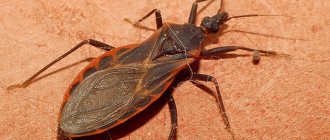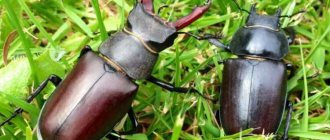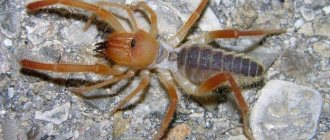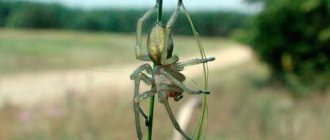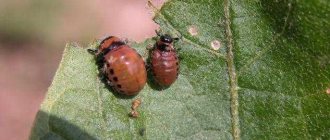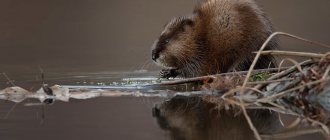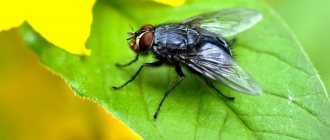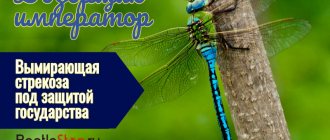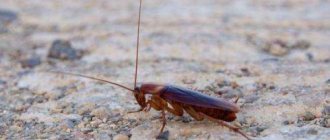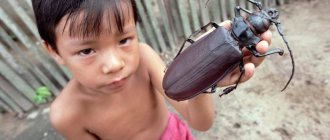Dragonfly squad
Anax imperator
A dragonfly belonging to the rocker family. It is considered one of the largest in Russia and belongs to a species whose numbers are declining. The length of the wings is up to 5 cm. The Emperor Watcher has a huge distribution area and is found in almost all natural areas. Prefers bodies of water. The average population density is 12 individuals per 100 m. The number of dragonflies is declining due to pollution of water bodies, unsuitable temperatures and natural competition.
Anax imperator
Order Orthoptera
Steppe racket (Saga pedo)
A grasshopper belonging to the subfamily of damsels. The largest species in Russia. Body length is 7-8 cm. The insect is distributed in the southern part of Europe, Kazakhstan, Ukraine, Georgia, and Moldova. On the territory of Russia it can be found in the zone of unplowed steppes (feather grass, forbs, etc.). The number of steppe finches is declining due to the destruction of its natural habitats.
Steppe grasshopper (Saga pedo)
Interesting fact : the steppe grasshopper is listed in several Red Books, including the Russian Federation, IUCN, and the European Red List.
Steppe fatty (Bradyporus multituberculatus)
The ball-headed grasshopper is an endangered species. Endemic to the Black Sea province (steppe zone). Body length 4-8 cm. It is extremely rare. Prefers dense grassy thickets of steppes.
Steppe fatty (Bradyporus multituberculatus)
Order Coleoptera
Aphodius bimaculatus
A beetle belonging to the family Lamelidae. The length is about 12 mm. It is red-black in color with characteristic black spots on the dorsum. Distributed in Europe, including Russia. Mainly lives and develops in cow dung. In some regions of Russia, the beetle population is quite high. And in some it completely disappeared.
Aphodius bimaculatus
Brachycerus sinuatus
Wavy brachycerus lives in the steppe European part of southeast Russia. The length of the beetle is 6-15 mm. It has a black color and a convex body. The antennae are thick and short, the head is wide and short. Distributed in ordinary and solonetzic steppes. Most often seen in April and May.
Brachycerus sinuatus
Smooth Bronzewort (Protaetia aeruginosa)
The smooth bronzeweed belongs to the lamellar family. It has a body length of 22-29 mm. A characteristic feature is the color - shiny, golden, green or copper-red. Lives in Europe and the European part of Russia. Found in old orchards and forests. Whether the beetle is disappearing or not is unknown, but the population is believed to be declining.
Smooth Bronzewort (Protaetia aeruginosa)
Toothed woodcutter (Rhaesus serricollis)
The rhesus barbel (toothed lumberjack) is a member of the longhorned beetle family. Body length of males is up to 40 mm, females 60 mm. It has a massive brown body. In Russia it lives in the Caucasus and the southern part of the Krasnodar Territory. Prefers to settle in lowland and middle mountain forests. In Russia there is a ban on catching as the population is declining.
Toothed woodcutter (Rhaesus serricollis)
Relic woodcutter (Callipogon relictus)
The relic woodcutter or Ussuri relic longhorned beetle is a beetle from the longhorned beetle family. Its length is about 110 mm. The elongated body is black, the elytra are chestnut. It prefers to live in deciduous and mixed forests; the beetle feeds on tree sap. In Russia it is found in the Amur region, Primorsky and Khabarovsk territories, and the Jewish Autonomous Region. The population is declining due to massive deforestation and collecting by collectors.
Relic woodcutter (Callipogon relictus)
Avinova's ground beetle (Carabus avinovi)
The Avinova ground beetle belongs to the ground beetle family. Body dimensions are approximately 26 mm. The beetle has greenish-bronze elytra and a copper-red head. Habitat: mountainous areas of Sakhalin, not found anywhere else. Prefers green moss, spruce-fir and occasionally mixed forests. The beetle population is low and close to extinction due to the destruction of mixed and coniferous forests.
Interesting: Wolf
